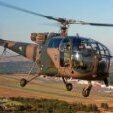The VMC criteria, 5115’ 1000ft above or below cloud, 1500m horizontal clearance and 5000m visibility, define VMC, if you are not within these parameters you are IMC. Flying in clouds mean you can’t visually separate from other traffic, you need to change category to IFR, for ATC traffic separation. Flying in cloud. You will lose control of your aircraft in less than 30 seconds I think it is, if not trained. If trained....well what does that mean? Hopefully enough training so you can turn around and get out. True vertigo, or”the leans”, is not only very scary, but is very incapacitating and happens fast. I know...I once had it climbing out in dense cloud, in a Kiowa. All I could do, was grip the cyclic with two hands, brace my two elbows on my legs and just stare at the AI, I could not look away for a second, as the feelings were so strong, despite willing myself not to, automatic impulses went to my arms, banking the aircraft over. I was not capable of doing anything else in that cockpit, but stare at the AI. Yes, the fact a Kiowa is not a stable aircraft didn’t help, but don’t be fooled. It happened to me in an Oryx (Super Puma) helicopter, at least after selecting a S&L attitude on the AI, I could hit the trim release, locking in the aircraft stabilisation system, and then relaxing my grip on the cyclic, as she held the attitude. The feeling is so strong, when you look at the AI, you simply don’t believe it, when it shows 5 deg nose up and 35 deg of bank. Rolling the aircraft level.....gives you a very strong physical sensation, you have just rolled it into a 40 degree bank, 10 deg nose down ....it’s very scary. Luckily...it only lasts for a minute or so...holding a steady correct attitude, soon settles your inner ear down. Don’t mess around in cloud...if you do, have the correct instruments and have the training.



